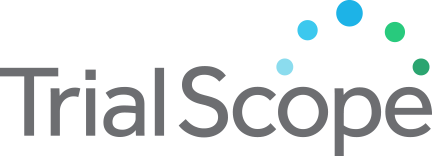Brace Monitoring for Adolescent Idiopathic Scoliosis (AIS)
Study Purpose
The overall aim of the study is to utilize a novel device and smartphone application in order to improve measurement of patient compliance with at-home bracing for scoliosis as well as create a more accurate assessment of brace fit via continuous and objective measures of tension. These ground-breaking metrics will provide analyzable data to more accurately reflect and predict actual patient compliance as well as allow for further exploration of how to increase compliance, and thus, efficacy of bracing; it will additionally allow both physicians and patients to have a more reliable measure for brace fit by providing them with continuous data of fit via tension, and provide built-in feedback mechanisms to the patient to ensure proper tightness of the brace. Additionally, the study will investigate whether providing the wearer's own brace-wear compliance information directly to the patient and their caregiver(s) via the mobile app will further improve rates of compliance as compared to those who do not receive the same feedback mechanism.
Recruitment Criteria
|
Accepts Healthy Volunteers
Healthy volunteers are participants who do not have a disease or condition, or related conditions or symptoms |
No |
|
Study Type
An interventional clinical study is where participants are assigned to receive one or more interventions (or no intervention) so that researchers can evaluate the effects of the interventions on biomedical or health-related outcomes. An observational clinical study is where participants identified as belonging to study groups are assessed for biomedical or health outcomes. Searching Both is inclusive of interventional and observational studies. |
Interventional |
| Eligible Ages | 8 Years - 17 Years |
| Gender | Female |
Trial Details
|
Trial ID:
This trial id was obtained from ClinicalTrials.gov, a service of the U.S. National Institutes of Health, providing information on publicly and privately supported clinical studies of human participants with locations in all 50 States and in 196 countries. |
NCT03292601 |
|
Phase
Phase 1: Studies that emphasize safety and how the drug is metabolized and excreted in humans. Phase 2: Studies that gather preliminary data on effectiveness (whether the drug works in people who have a certain disease or condition) and additional safety data. Phase 3: Studies that gather more information about safety and effectiveness by studying different populations and different dosages and by using the drug in combination with other drugs. Phase 4: Studies occurring after FDA has approved a drug for marketing, efficacy, or optimal use. |
N/A |
|
Lead Sponsor
The sponsor is the organization or person who oversees the clinical study and is responsible for analyzing the study data. |
Columbia University |
|
Principal Investigator
The person who is responsible for the scientific and technical direction of the entire clinical study. |
Benjamin Roye, MD, MPH |
| Principal Investigator Affiliation | Columbia University |
|
Agency Class
Category of organization(s) involved as sponsor (and collaborator) supporting the trial. |
Other |
| Overall Status | Recruiting |
| Countries | United States |
|
Conditions
The disease, disorder, syndrome, illness, or injury that is being studied. |
Adolescent Idiopathic Scoliosis |
Contact a Trial Team
If you are interested in learning more about this trial, find the trial site nearest to your location and contact the site coordinator via email or phone. We also strongly recommend that you consult with your healthcare provider about the trials that may interest you and refer to our terms of service below.
